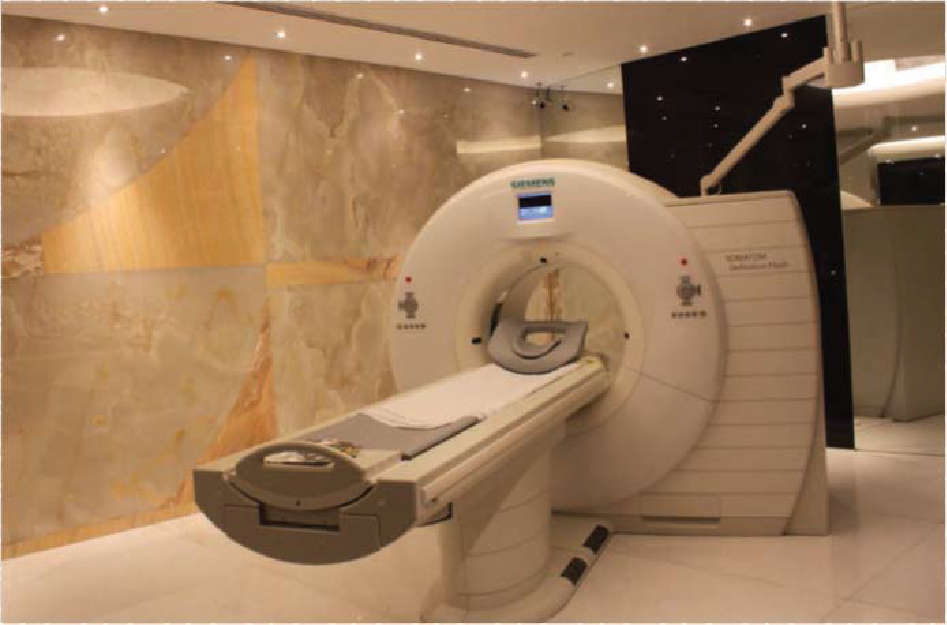What is Coronary Computed Tomography Angiography?
Computed Tomography (CT) is an advanced imaging study that uses X-rays and computer processing to create two or three dimensional images of internal organs.
Computed Tomography Angiography (CTA) is a CT imaging technique to determine the presence of fat and/or calcium deposits (plaques) in the blood vessels to the heart. Plaques can abnormally narrow the vessels in a medical condition called atherosclerosis.
Coronary CTA involves the intravenous injection of a contrast material (commonly known as a dye) and directly illustrates the heart's blood vessels on screen.
Why Do You Need a Coronary CTA?
A coronary CTA is a medical procedure that checks the condition of the heart's blood vessels and is able to detect both non-obstructive and obstructive coronary artery disease. Non-obstructive coronary heart disease means no significant blockage of blood flow to the heart muscle, whilst obstructive coronary heart disease means significant blockage and may give rise to chest discomfort and shortness of breath. Other indications for CTA include inconclusive stress tests or abnormal coronary artery origins.
Coronary CTA is not a replacement for invasive coronary angiography. Please discuss with your doctor to find out more.
What Can You Expect for the Procedure?
Before going for a coronary CTA, our staff will be conducting tests to measure your:
- Height
- Weight
- Blood pressure and pulse
- Creatinine levels. Creatinine is a chemical waste product that is produced by our muscle metabolism.
When the above tests are done, a small plastic tube or cannula is inserted into one of the veins on your arm for the injection of the contrast material. The procedure takes place in the Cardiac CT Laboratory.

Cardiac CT Imaging Machine
For the attachment of Electrocardiogram (ECG) electrodes to the chest, male patients will be asked to remove their shirts. Female patients may be asked to change into special gowns for the purpose of attaching ECG electrodes.
Patients with pulse rate above 65 beats/min will be given an oral dose of atenolol, a drug that slows the heart rate. The drug may take about an hour to take effect. This is essential as a slower heart rate produces a better image quality of the heart.
Once the heart rate is acceptable for quality images to be taken, you will be asked to lie on the imaging table and ECG electrodes will be attached. During the process, you will receive instructions to breathe in, hold your breath for about 10 seconds and breathe out. You will also be given a medication to "open up" the coronary arteries. These steps are essential for capturing good quality images. If you think you are not able to hold your breath for 10 to 15 seconds (or lay still for that period of time), let your doctor or the staff know.
Contrast material is then injected into the vein and the table of the CT scanner moves into the scanner to image the heart. You may experience the following:
- Warm and flushed sensation
- Having the urge to urinate
These symptoms are temporary, lasting only for a couple of minutes. As the table moves, you may also hear some buzzing, clicking and humming sounds. These are normal and should not make you feel nervous. Throughout the test, our staff can see, hear and speak with you.
The test can take between 15 minutes (if the heart rate is well controlled from the beginning) to a couple of hours (if time is needed for the heart rate to decrease).
Inform Your Doctor On:
- Any allergy to contrast material, shellfish or iodine. You have to be pre-treated with medications to prevent an allergic reaction.
- Kidney problems. An alternative imaging study or precautionary measures may be undertaken before the test.
- Your pregnancy. You should not undergo coronary CTA if you are pregnant.
Preparing for a Coronary CTA
1. Do not eat or drink for at least 6 hours before receiving the contrast material. Avoid taking food and/or drinks that contain caffeine (e.g. coffee, Tea, Chocolate, Coke) for at least 12 hours before the procedure as they can increase your heart rate. However, you can take your usual medications, if any, on the day of the test.
